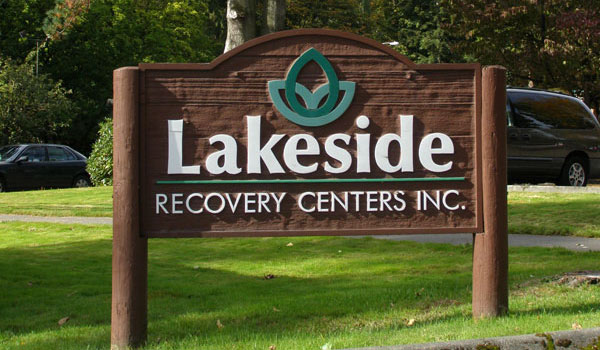The History of Addiction
In the past, public perception centered around addiction as a moral failing rooted in one’s personality. People previously vilified not only drugs and alcohol, but those who had developed dependencies on them.
For example, in the 1930s, it was believed that addiction was caused by a weakness in character – a refusal to say no. Addicts were summarily misunderstood and even treated as criminals, resulting in imprisonment or institutionalization. Today, after a great deal of research and scientific advancement, we understand that ongoing drug use actually causes physical changes in the brain. This means that addiction is not a character flaw at all, but instead a chronic, progressive disease.
Addiction Is a Disease
It is now accepted that addiction is in fact a medical concern, which can be diagnosed and managed. Rather than categorizing it as a mental illness, it should instead be defined as a full-on disease of the brain. In the earliest stages of addiction, the person in question appears “normal” to others. They may only drink or use drugs in a social setting.
As the addict acclimates to the habit of taking drugs, they begin to develop a tolerance to them, requiring more and more of the substance to function. They will also start to feel the symptoms associated with withdrawal if the time between doses stretches too long, which compels them to use again. This series of events is due to the impact that addiction has on the brain.
How Addiction Changes Your Brain
The brain is the most complex organ in the human body. It regulates not only basic functions, but it also allows people to respond to external stimuli and act on the world around them. Many people liken the brain to a supercomputer – it consists of billions of neurons, organized into circuits and neural networks. It also operates through the transmission of neurochemicals, which create their own system of communication. Each of these cells and circuits work together to produce human behaviors, sensations, and perceptions.
Explained simply, drugs and alcohol alter the way the brain’s messengers send, receive, and process signals. Heroin, for example, mimics a natural neurotransmitter in the body, which allows the drug to latch onto and activate neurons itself. While they fill up receptors in a similar fashion, they don’t activate the neurons identically, resulting in abnormal neural messages. Amphetamines, on the other hand, cause neurons to release an explosion of natural neurotransmitters that is abnormally large. This also disrupts the brain’s internal communication.
Many areas of the brain are profoundly impacted by ongoing drug use. The extended amygdala, brain stem, and prefrontal cortex all serve incredibly vital functions, but they are blunted or altered by substance use. The simplest example is the effect of drugs on the basal ganglia: the brain’s “reward circuit.” In order to produce a feeling of euphoria, individuals consume substances like methamphetamine or opioids. These drugs over-activate the reward circuit, and with repeated exposure, the circuit itself adapts to the consistent presence of the drug. This lowers its sensitivity and can make it hard to feel pleasure from anything except increasing amounts of the person’s drug of choice. All of these factors result in a complete loss of control over one’s substance use, resulting in the phenomenon known as addiction. The physical changes to gray matter, white matter, and areas of neural activation are so severe that they are able to be viewed in brain scans.
Treatment and Recovery
While these revelations are disturbing, the fact remains that addiction is a chronic condition that can be managed. In the same way that those with diabetes or high blood pressure have to manage their lifestyles in order to thrive again, those in recovery are able to overcome their addiction and live full lives.
This process can take years to become fully established, but generally is divided into early, middle, and late recovery. In every stage, it is vital for the addict to receive comprehensive treatment and extensive support from family and friends. Because this disease is insidious and notoriously difficult to address, it is vital that treatment begins under medical supervision. After the body has been completely cleared of mind-altering substances, mental and spiritual healing can begin. This involves reprogramming a person’s coping mechanisms and initial reactions, redirecting away from substance use and towards healthier alternatives. With proper intervention, anyone can heal from addiction.
Overcoming the Stigma
Unfortunately, while we now know that addiction is a life-altering disease of the brain, many people still refuse to seek help. In a 2014 government survey, it was revealed that while over 21 million Americans had a substance use disorder in the past year, only 2.5 million received the treatment they needed. One of the primary ways that society may address this issue is by beginning to dismantle the stigma surrounding addiction, rehab, and a life of recovery and sobriety.
When someone speaks poorly about a person with this disease, they are shaming the sick. You can push back on this by offering compassionate support to those around you who are dealing with it. See your loved one as the person they are, not which drugs they use. Avoid hurtful labels and speak up when you see someone speaking poorly about those fighting addiction. Together, we can overcome the stigma surrounding this disease and create a brighter future.
Seek Help Today
If you are struggling with the disease of addiction, or if you know someone who is, there is always hope. With thousands of clean and sober alumni, Lakeside-Milam offers a comprehensive, proven approach to treatment and recovery. To learn more about our services, call (800) 231-4303 today.






